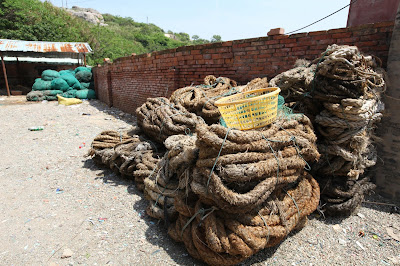Jiro Dreams of Sushi is a 2011 American documentary film directed by David Gelb. The film follows Jiro Ono, an 85-year-old sushi master and owner ofSukiyabashi Jiro, a Michelin three-star restaurant, on his continuing quest to perfect the art of sushi. The film also profiles Jiro's two sons, both of whom are also sushi chefs. The younger son, Takashi, left Sukiyabashi Jiro to open a mirror image of his father's restaurant in Roppongi Hills. The 50-year-old elder son, Yoshikazu, obligated to succeed his father, still works for Jiro and is faced with the prospect of one day taking over the flagship restaurant.
In my understanding about Japan, in addition to “etiquette”, I am most impressed by the Japanese “Zhiren Spirit”.
“Zhiren” refers to “craftsman” in Japanese language. If a disciple is called by his master as “Zhiren”, it means he has gained the basic recognition for the skill. Traditional Japanese Zhiren usually is engaged in just one craft, which is the so-called “hanging lifelong over one thing”. If the whole life is hung on one craft, how can we name this kind of realm? The secret maybe lie in the item of “hanging”, which vividly interprets a kind of care that is difficult to put down, a kind of disturbance as if treading on eggs, and also a kind of vigilance to seek for increasing skills. Jiro Ono says: “Once you decide your job, you have to devote yourself to it and you must love you work without any complaint, and you have to hone your skill in the lifelong period”.
The film does not focus on the food too much, but turns its lens to these godlike people. And look! The one who carries the camera is the film’s director, and another crew member is responsible for film editing. Both of them are students of the American Film Institute and they totally do not understand Japanese.
When shooting the film, the director David worked in Tokyo with translators, while the editor Brandon gave a remote control in LA. The original video was about 200 hours. The editing was difficult for the editors who completely do not understand Japanese, so they paid a lot to ask someone to translate the whole 200-hour original video. The director’s uncle is a very famous violinist, so there is a piece of original soundtrack in this film.
"While watching it, I found myself drawn into the mystery of this man. Are there any unrealized wishes in his life? Secret diversions? Regrets? If you find an occupation you love and spend your entire life working at it, is that enough? Standing behind his counter, Jiro notices things. Some customers are left-handed, some right-handed. That helps determine where they are seated at his counter. As he serves a perfect piece of sushi, he observes it being eaten. He knows the history of that piece of seafood. He knows his staff has recently started massaging an octopus for 45 minutes and not half an hour, for example. Does he search a customer's eyes for a signal that this change has been an improvement? Half an hour of massage was good enough to win threeMichelin stars. You realize the tragedy of Jiro Ono's life is that there are not, and will never be, four stars."
在我对日本的所有了解中,除了“礼仪”,日本人的“职人精神”是给我印象最深刻的。
“职人”,在日语中有“手艺人”的意思。一个弟子被师父以“职人”相称,是登堂入室的认可。传统的日本职人往往一生只从事一职,也就是所谓的“一生悬命”。一生把命都悬在一项职事上,这是怎样的境界?奥妙或许都在这“悬”字,传神演绎着一种放不下的牵挂,一种如履薄冰的忐忑,一种日求精进的警醒。用小野二郎的话说:“一旦你决定好职业,你必须全身心投入工作,你必须爱你的工作,千万不要有怨言,你必须穷尽一生磨练技能。”
影片没有过多聚焦于美食,而是把镜头对准了那些神一样的人们。哦,对了,扛镜头的就是本片的导演,另一名剧组成员负责剪辑。他们俩是美国电影学院的学生,完全不懂日语。
拍摄的时候是导演David和翻译在东京拍,剪辑师Brandon在LA远程遥控。原始录像200小时。剪辑很困难,因为剪辑师完全不懂日语,于是花高价请人把200小时原始录像全部翻译了一遍。 导演的叔叔是一个非常有名的小提琴家,片子里有段音乐就是此人的原声。


















































